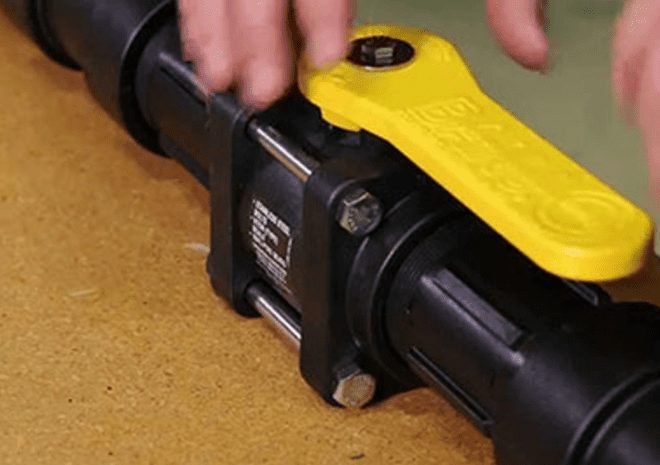Last Updated on February 15, 2024 by Saira Farman
Potable water should only flow in one direction – from the distribution system to the consumer. Backflow happens when water containing sewage, fecal material, harmful pesticides, herbicides, and fertilizers, or other hazardous materials reverse its flow and end up in a potable water supply. Cross-connection, places in the plumbing system where the potable water supply is connected to a non-potable water supply, are the most vulnerable to backflow. In the events of a backflow, portable water become contaminated with pollutants that could be harmful to water users. There are two main types of backflows:
- Back Pressure: If the plumbing’s pressure exceeds the pressure within the water distribution system, the contaminated water is pulled or sucked into the public water system. The issue of back pressure is most common in pressurized systems such as boilers, elevated tanks, and pumps designed to propel water to higher floors.
- Back siphonage: Back siphonage happens due to a drop in pressure in a water system, which pulls dangerous fluids or materials into the portable water supply. Back siphonage usually happens due to water main breaks or excessive demand during fire-fighting operations or other periods of high demand.
In rare cases, the sewerage pipes carrying the waste water from your home to the local water system, can suffer from wear and tear over time. A break in one of those pipes can lead to water contamination as well. This is evident from a characteristic smell as well as leaks from your drains.
What Can Contaminated Water do?
Waterborne diseases are causes by microscopic organisms, such as pathogens, viruses and bacteria, when they are ingested through contaminated water. Sewage water can sometimes mix in with the portable water supply due to a failing backflow preventer device. Typhoid is one of the most common illnesses caused by drinking water contaminated by feces. Cholera also spreads through contaminated water and causes severe dehydration and diarrhea.
Dysentery and hepatitis A are also caused by pathogens in contaminated water, especially one containing fecal matter. E-coli bacteria is found in animal waste, and in places where human water sources and cattle coexist, E-coli bacteria can lead to life-threatening symptoms. Food that comes into contact with water contaminated with fecal matter, is the biggest cause of Salmonella.
Contaminated water may also contain Hydrogen sulfide, which is easily recognizable due to its offensive “rotten egg” odor. Not only does Hydrogen sulfide ruin the taste and odor of water, it also corrodes iron, steel, copper, and brass piping system due to its acidic nature, forming a black precipitate that can stain laundry and bathroom fixtures, darken silverware and discolor copper and brass utensils. Not to mention, drinking water containing a high concentration of this colorless gas leads may cause headaches, dizziness, nausea, coma, blurred vision, hemorrhage.
Not to mention, water contamination may be in the form of minerals, such as magnesium or calcium; a phenomenon we call “water hardness”. While hard water is safe for consumption, it is a nuisance since it causes buildup in your pipes and reduce water pressure in your taps. Furthermore, presence of active mineral ions can corrode metal pipes and water heating systems through galvanic corrosion. Hard water leaves grimy rings in tubs and sinks and leaves a certain degree of roughness in your laundry. An excess of iron in water also lends it a metallic odor and taste and stains bath tubs and sinks.
How to Inhibit Backflow?
A backflow preventer valve is a contraption that prevents the water in your main water supply lines from flowing in a reverse direction. Depending on the type of backflow device you are using, a backflow preventer can be installed inside a vault, inside a building, or along with outside and above ground in an enclosure. In its most basic form, a backflow device contains a check valve that is designed to close as a result of a drastic change in water pressure, thereby preventing a backflow situation.
There are three most popular types of backflow devices, depending on the use; for instance, Double check valves are installed to prevent water contamination in fire, lawn, and boiler systems, while reduced pressure zones are installed to stop contaminants such as pesticides, fertilizers, and toxic chemicals from entering the sanitary water.



























